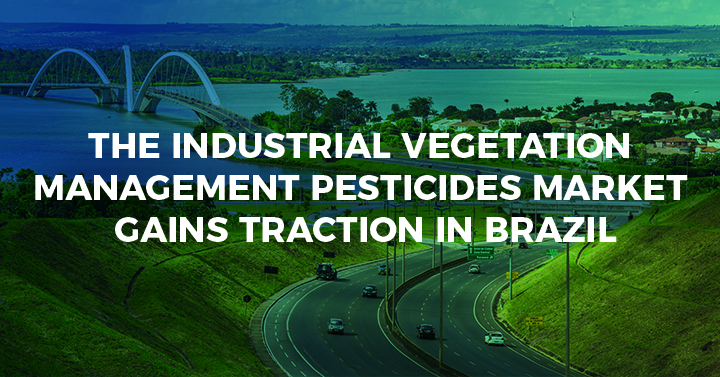In 2019, Brazil was the world’s second-largest pesticides consumer, only behind China, and followed by the United States. The Brazilian agrochemical market is primarily controlled by large multinational groups such as Bayer/Monsanto, BASF, Corteva, Syngenta, and Adama (under parent company, ChemChina).
In Brazil, the industrial vegetation-management (IVM) market is defined by those segments where only non-agricultural products are applied. These pesticides (generally herbicides) are intended for use in areas where there is no cultivation, such as railways, highway margins, electrical substations, pipelines, airport runways, and industrial yards, among others. However, these chemical compounds cannot be applied in urban areas.
The IVM segment in Brazil is still relatively small compared to countries such as the United States, with only a few companies operating within it, offering a differentiated portfolio of herbicides for the management of vegetation in non-agricultural areas. Compared to other types of control, this one helps reduce costs. Although small, the sector has been growing in importance.
In 2019, revenue fell in terms of the USD; however, due to the appreciation of the USD, there was an increase to Brazilian Real sales. Herbicides still dominate the market and constitute the largest product category, accounting for over 90% of total sales.
In terms of volume, glyphosate remains the leading active ingredient used in the IVM market in Brazil. However, because it is a non-selective molecule, it is often not considered by industry experts when ranking ingredients.
The use of paraquat was banned at the beginning of 2020, although farmers believe that the active ingredient represents an important tool for Brazilian agriculture, essential for planting diverse crops, in addition to being a product widely used in conservation practices, such as direct planting. New studies are being provided by the main suppliers, with a focus on highlighting the safety of the product with regard to its application in the field, assuming the correct use of technology.
The Range & Pastureland market has great growth potential, as it is still little explored compared with the available area; it is approximated that currently no more than 15% of the total area is treated with herbicides. Estimated growth for the segment in the next five years is promising, as many companies are investing in triple molecules, changing their business strategies, and outsourcing personnel. As beef prices increase, requiring more technical processes, growth prospects for the herbicides market also increase.
Industry experts agree that the market needs new players in order to grow. This is because along with new companies, new distribution channels are being opened, requiring additional technical personnel and agronomists. In addition, the number of users interested in the products will increase (consumer education is paramount) and prices will drop, which increases competition. In order to grow, players must make the technology available not only to the large farms, but also to the smaller ones.
The continued appearance of generic products results in end-users being more cost-conscious and more aware of the options, with manufacturers placing an emphasis on creating value in product positioning of new actives.
The Forest Stewardship Council (FSC) restricts use to practically all synthetic insecticides available for Brazilian forestry, and this scenario tends to worsen with new restrictions. This demands the search for alternatives to reduce damage by pests and, at the same time, meet the certification requirements, guaranteeing access to the Brazilian forest products market.
The use of pesticides by farmers to clear/deforest large tracts of land is still recurrent, intensified due to the lack of strict control of the sale of herbicides. It should be easy to supervise the use of pesticides in forests, if the trade of herbicides is similarly closely monitored, but this is not the case in Brazil. To gain in-depth insights on this market, subscribe to our Industrial Vegetation Management Market for Pesticides: Country Analysis and Opportunities report.

